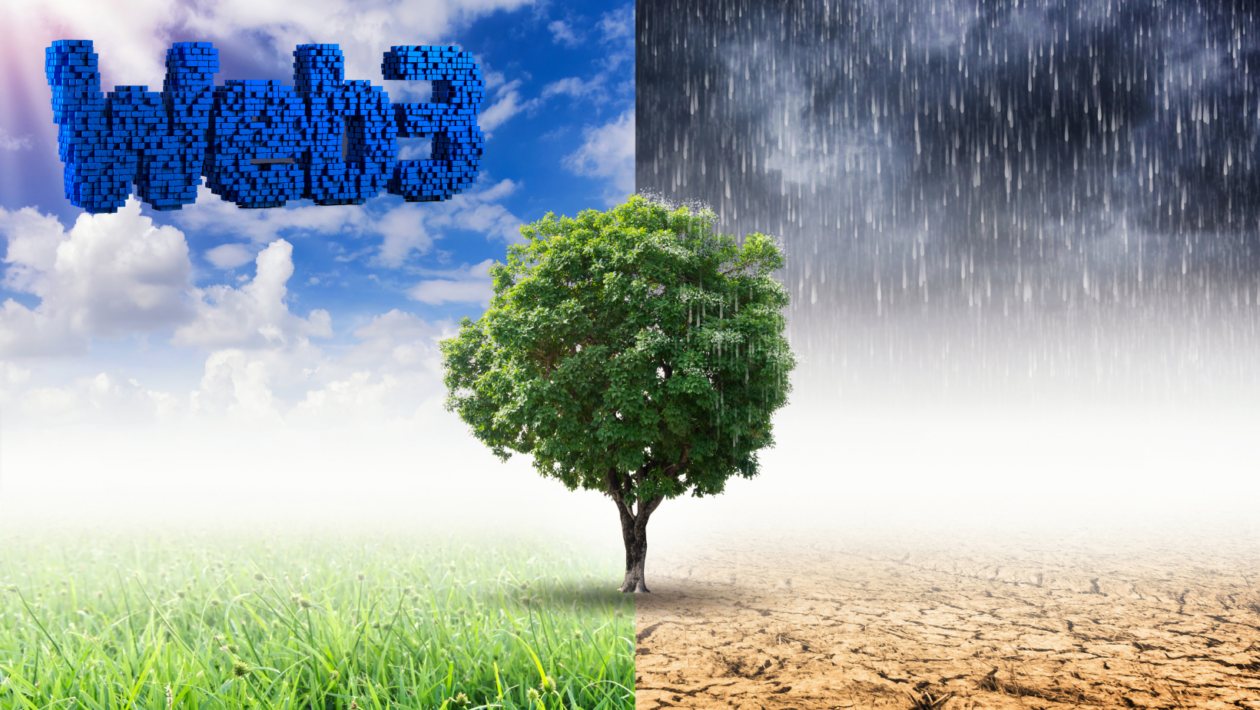The cruel reality for small island nations across the Asia-Oceania region is their position at the tip of the climate change spear. Our collective march toward convenience and wealth at the expense of the environment has sea levels on pace to rise two-thirds of a meter by 2100. To put that in perspective, the countries of Kiribati and Maldives are estimated to be totally submerged by 2050. And that is not even to consider the impact of increasing weather events like cyclones.
In this absence of real commitment to sustainability, island nations have been left to fend for themselves. Rising sea levels are regrettable, say the large polluting nations, but are not nearly enough to warrant systemic change. It has left island nations searching for solutions to an existential problem. Namely, what can be done now to ensure, or at least prolong, the future existence of their homes.
Web3 has been offered up as a potential solution to the problem of climate change. It doesn’t have all the answers, to be sure, but it can be a useful tool. For island nations in particular, Web3 presents opportunities to issue revenue-generating climate assets, find new sources of funding for climate projects, and ultimately create a system of sustainable wealth transfer from the world’s biggest polluters.
On-chain climate assets as a revenue stream
The concept behind climate assets, such as carbon and renewable energy credits, is to incentivize regeneration, preservation and sustainability. And while the spirit behind the scheme is good, the implementation has created issues — the opacity and complexity of carbon markets, for one. Another is the cost associated with getting climate assets to market. These all add up to a supply shortage when corporate demand for carbon credits is at an all-time high.
Island nations are rich in climate assets — mangroves, rainforest, seaweed, seagrass, wind and sun. What they don’t have is a means to leverage the potential of those assets to meet global demand and create new revenue streams. This ultimately furthers the case for exploitation, a double-edged sword that both reduces a nation’s climate assets and puts it at even greater risk of rising sea levels and other climate events.
Web3 and its underlying technology are making it easier for island nations to leverage their climate assets. Carbon and renewable energy credits can be issued on-chain through asset tokenization, sold on a transparent voluntary market, and retired in a way that prevents fraud and double-selling. This process effectively turns climate assets into a legitimate asset class because once you have them on-chain, they are accessible by all and can be used in decentralized finance and regenerative finance
But it isn’t just about tokenizing the assets themselves. Climate asset provenance and quality can also benefit from Web3. Decentralized protocols and open-source methodologies can be used to issue new, Web3-native climate assets. Imagine a scenario in which an island nation is able to issue blue carbon credits using a peer-reviewed methodology for mangroves. The revenue earned from the sale of these credits can then be reinvested back into further mangrove regeneration.
Sustainable wealth transfer
The model referenced above — corporations purchasing renewable climate assets — can be seen as a form of wealth transfer from the big polluters to island nations. This is in stark contrast to the standard approach taken by the large polluting nations, which is to throw money in the general direction of the primary victims of climate change in the hope that it will make up for all the environmental damage. It’s a one-way “solution” that is shockingly short-sighted and arrogant.
The reality is that climate change is not something we can just throw money at, especially while the incentives for exploitation remain higher than those for regeneration and preservation. We need sustainable wealth transfer — sustainable incentives for regeneration and preservation where any nation, not just island nations, can move away from exploitation and generate recurring revenue from their climate assets.
Web3 has an important role to play in realigning these incentives. Aside from facilitating the generation and sale of climate assets, it can open up access to new funding streams for island nations looking to implement climate impact projects. Special-purpose DAOs (decentralized autonomous organizations), for example, can be employed to coalesce funding around a particular project or initiative, say a reforestation project in Indonesia that benefits local communities. Revenue earned from the climate assets can then be used to repay investors.
How island nations can take advantage of Web3
Web3 adoption is a journey that starts with an openness to embrace a new way of doing things and a willingness to explore alternatives in the fight against climate change. It’s the kind of forward-thinking that is needed to solve a multi-faceted problem like climate change.
There have already been examples of island nations taking the lead. We’ve seen Palau — an island nation already dealing with the impact of rising sea levels — implement a Web3-based digital residency program as a first step towards becoming a global DeFi and digital asset hub. The Marshall Islands, in turn, wants to become the global hub for DAO incorporation. These are clear indicators of their commitment to exploring Web3 solutions.
Beyond that, there are other steps island nations can take to begin on-chaining their climate assets and move toward a sustainable wealth transfer model:
- Conduct evaluation of existing climate assets and potential for new climate assets.
- Work with credible partners in Web3, environmental science, and climate tech.
- Pass legislation recognizing the legality of tokenized climate assets.
- Share knowledge and experience with other small island nations.
At the same time, those of us in the large polluting nations should actively look to support small island nations in their fight against an existential threat we are at least partly to blame for. Web3 is making that easier than ever. We will be able to buy blue carbon credits as part of our offset strategies, directly invest in climate projects, and raise awareness of the plight of island nations. And while it may not be the perfect solution, it just might be the best chance island nations have of doing something about a problem they had no part in creating.





